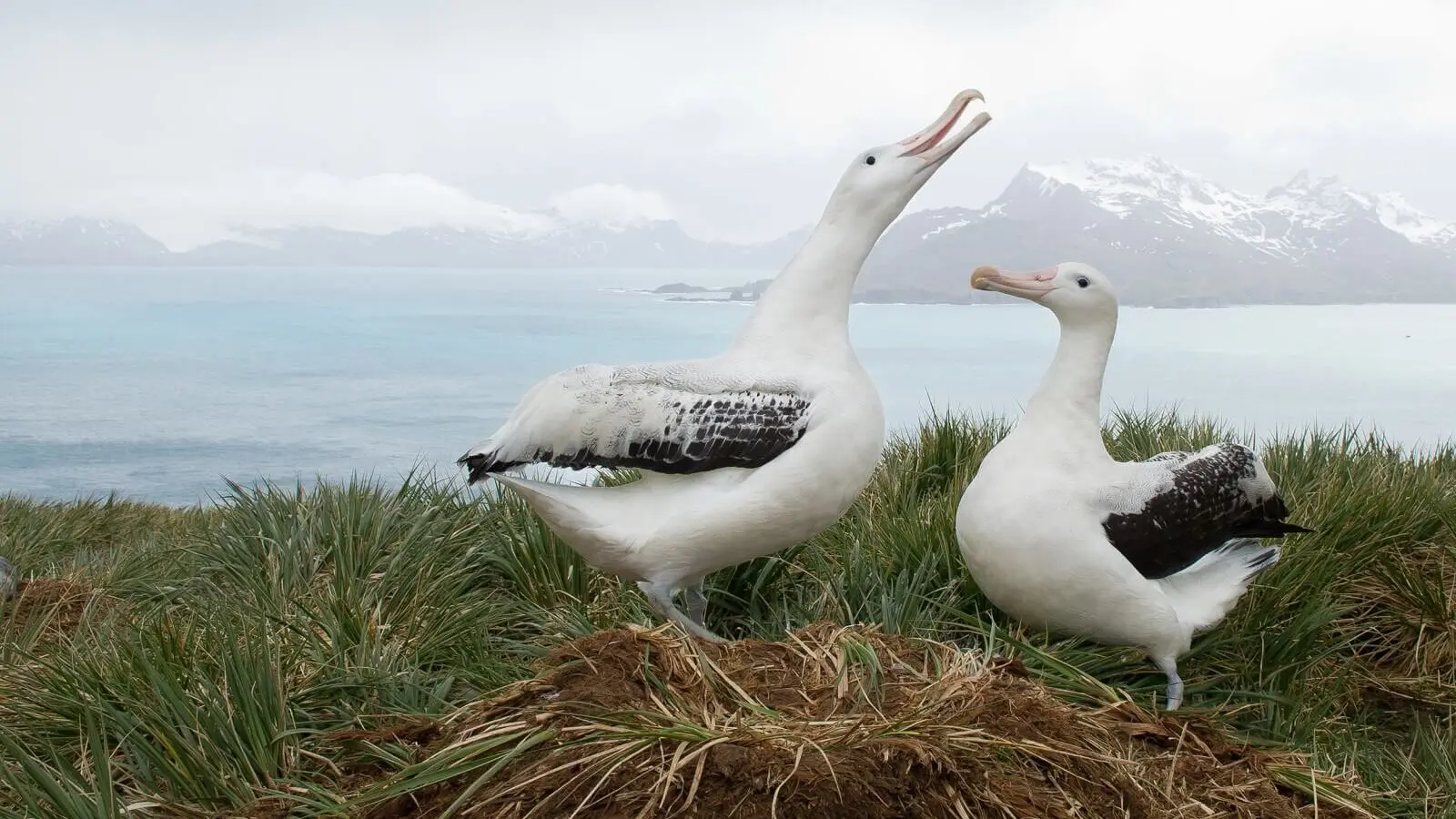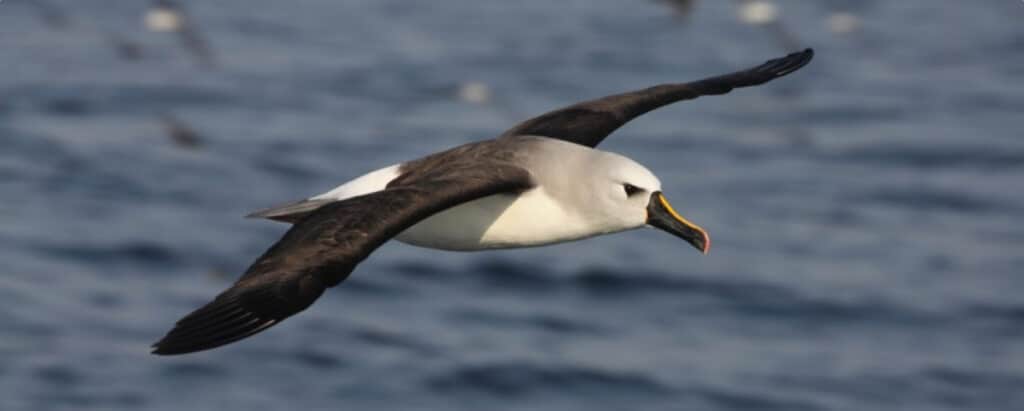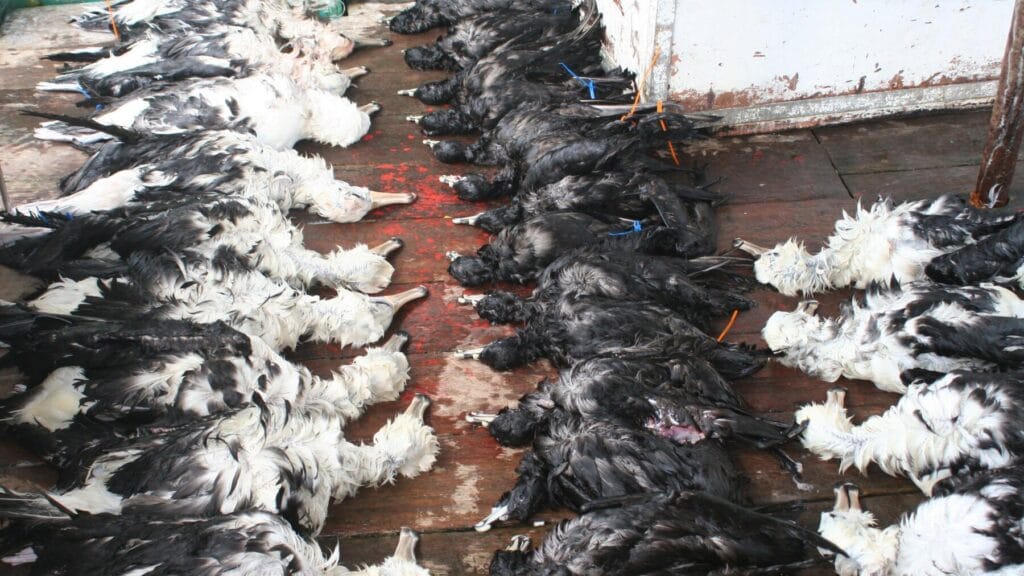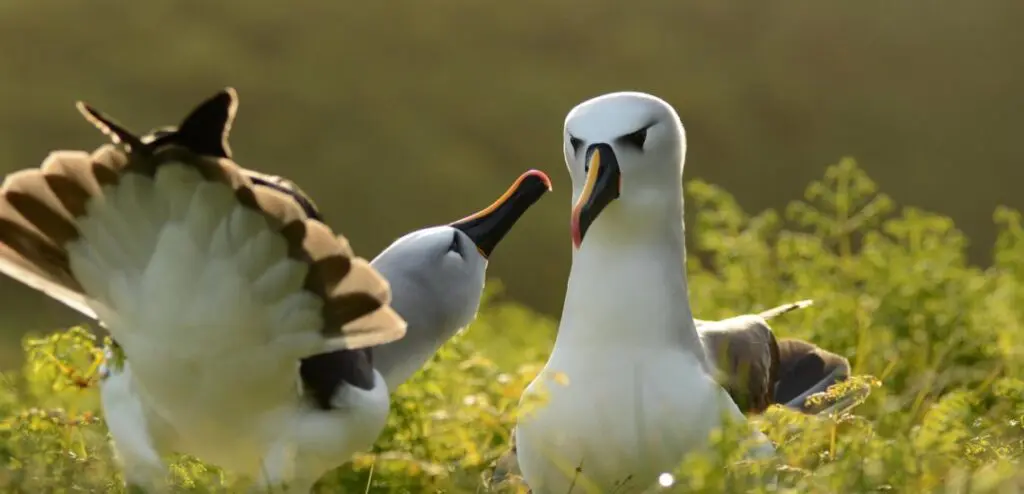Become a species champion
Join the ever growing community of Species Champions supporting our work to prevent extinctions
As a global Partnership, we believe in internationalism. We have translated as much content in your language as our resources allow. Please visit the English language site to view all of our content.

The Wandering Albatross (Vulnerable) has the largest known wingspan of any bird – a whopping 3.5 metres! Of the 22 known species of Albatross, all but one of them has been listed as at some level of concern by the BirdLife Red List team. That means they need our help!
Seabirds, particularly members of the albatross family, are becoming increasingly threatened, and at a faster rate globally than all other groups of birds. They face a wide variety of threats.
Many declines are closely linked to the expansion of commercial longline fisheries in seabird feeding areas, combined with the impacts of invasive alien species at nesting colonies.
In 2005, BirdLife and the RSPB jointly launched the Albatross Task Force: an international team of experts working alongside governments, communities and fishers on board vessels to introduce pioneering methods of preventing accidental seabird ‘bycatch’.
Family: Diomedeidae
Diet: Carnivore
Life span: More than 70 years
Wingspan: 195 to 335cm
Weight: Up to 10kg
Group name: Flock



When courting, Albatross perform breath-taking mating dances that they may have practiced for years to perfect.
Steph Prince, BirdLife International Marine Project Manager, describes an unforgettable encounter with dancing Wandering Albatrosses on Bird Island, South Georgia:
“Sitting amongst the tussock grass, I watched at least a dozen Wandering Albatrosses in pairs tapping their bills together, swaying and throwing open their gigantic wings in their mesmerising courtship ritual. Then I felt a smack on the back of my head, and a huge white wing came into sight as a male wandering albatross walked straight past me, wings outstretched, ready to begin his routine. He didn’t even seem to notice me sitting in the grass, but I certainly won’t be forgetting my foray into world of dancing albatrosses…”
Albatrosses can cover 16,000 kilometres in a single foraging trip.
And they can travel almost 1,000 km per day without flapping their wings! They do this by using their enormous wings to ride the ocean winds.
Albatrosses’ far-ranging foraging behaviour puts them in the path of fishing vessels around the world, where thousands of albatrosses meet their end accidentally caught in fishing equipment when diving for bait or fish discards.
The rate of “bycatch” is so high that albatrosses cannot replenish their populations quickly enough. Today, 15 of the world’s 22 albatross species are on the brink of extinction.
Join the ever growing community of Species Champions supporting our work to prevent extinctions
Our evidence-backed approach ensures your money will always go where it’s needed most
Join a worldwide community of people who care about birds and conservation, and help to make a real difference
Find out more about the 22 species of Albatross and all other birds on the BirdLife DataZone
Explore and contribute data on the The BirdLife International Seabird Tracking Database